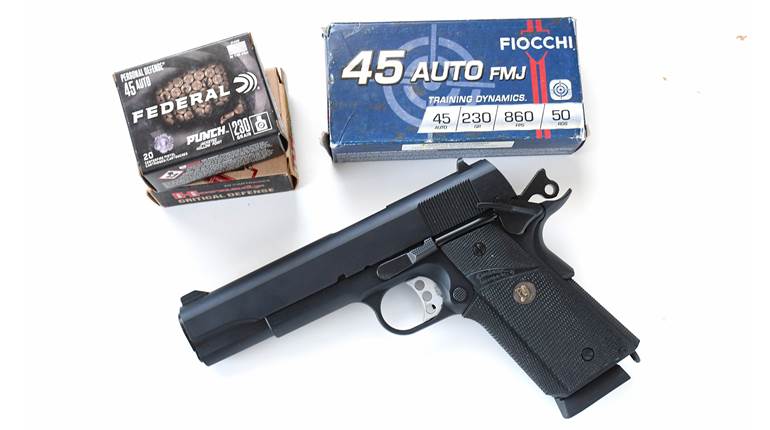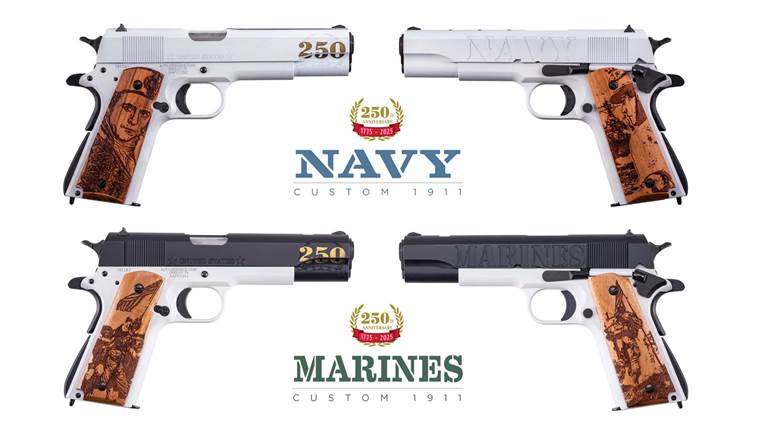
When I first began shooting the 1911 in competition, I was in the Marine Corps of the early 1960s. The game was NRA Outdoor Pistol-slow, timed and rapid-one handed at 50 and 25 yards. The Corps put a lot of emphasis on the sport, with Division and Marine Corps matches conducted to select the team that went to Camp Perry for the Nationals. The season started in the spring and ended after Perry. At the beginning of the Division Matches, we spent several weeks working with a training team from Marksmanship Training Unit. Issued guns were built up before each season by RTE (Rifle Team Equipment) armorers.
It was in this period of training that I was taught to handle my issued match gun in a particular way. When I mentioned this technique in another training atmosphere recently, nobody had heard of it. For a right-handed shooter I was taught to have the slide locked open and to insert a loaded magazine and fully seat it. Then, with the thumb of the left hand to hold the tip of the hammer down and release the slide lock with the right thumb. This allowed the slide to run forward, chambering a round and leaving the hammer cocked. Thus did you prepare for a string of fire.
The maneuver was said to help the longevity of the trigger job by keeping the nose of the sear out of engagement as the slide slammed violently forward. It is opposite from the combat shooter, who loads his pistol by pulling the slide fully to the rear and releasing it, which insures greater slide travel-as happens when a round is fired-and better functional reliability. I am just wondering whether or not any reader remembers this or has any comment on its value.





































